|
Displaying items by tag: world war II

An art historian is claiming that two artworks residing inside Germany’s parliament were stolen from their rightful owners by Nazis during World War II. The shocking discovery ran in an article in Bild newspaper on Monday, December 30.
The historian’s investigation into the German parliament’s art collection began in 2012 and determined that an oil painting by Georg Waltenberger and a chalk lithograph by Lovis Corinth had been stolen by Nazis. One of the works was acquired by the parliament from Cornelius Gurlitt, a recluse who was recently accused of hoarding hundreds of masterpieces stolen by Nazis. Gurlitt’s father, Hildebrandt, had been put in charge of selling the stolen artworks by Joseph Goebbels, Hitler’s Minister of Propaganda, but secretly hoarded many of them.
The parliament’s art collection is comprised of nearly 4,000 works and according to investigations, 108 of those pieces are of unknown provenance. The Central Council of Jews in Germany has called for a list of the parliament’s artworks to be published.
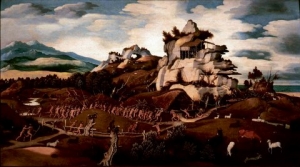
The Rijksmuseum in The Netherlands has purchased one of the earliest depictions of America in the history Western art. Discovery America by the Dutch Renaissance painter Jan Mostaert (circa 1475—1555/56) was created between 1525 and 1540 and features a made-up scene of Spanish aggressors firing cannons and rifles at indigenous people who are armed with bows and arrows.
Discovery America, which is also known as Episode from the Conquest of America, was one of 202 paintings returned to the daughter-in-law of Jacques Goudstikker, a Jewish art dealer whose collection was plundered by the Nazis. Following World War II, the painting was displayed in the Frans Hals Museum in Haarlem until Goudstikker’s heirs demanded that the work be handed over to the family in 2006. Goudstikker’s daughter-in-law approached the Rijksmuseum about purchasing the painting earlier this year. Nathan and Simon Dickinson Gallery, which has headquarters in New York and London, brokered the sale. The gallery had brought the painting to the European Fine Art Fair in Maastricht in March where they asked $14 million for the masterpiece.
Discovery America’s importance is bolstered by the fact that it is one of the oldest Dutch paintings mentioned in the definitive Dutch art history book, Het Schilder-boeck from 1605.
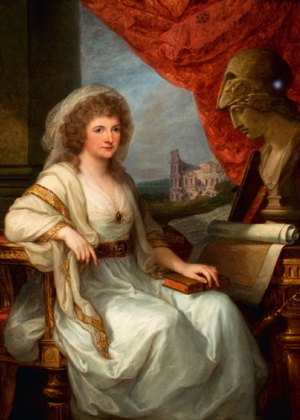
An 18th century portrait of the German Duchess Anna Amalia of Saxe-Weimar-Eisenach commissioned by the German writer Johann Wolfgang von Goethe has been returned to its rightful heirs after 70 years. The oil painting by Angelika Kauffmann went missing from the duchess’ descendants’ palace in Poland during World War II. The work did not resurface until 2011 when a Polish consignor brought the work to Sotheby’s.
The painting was returned to the city of Weimar during a ceremony at the Weimar palace. Michael Saxe-Weimar-Eisenach, the heir of the painting, has decided to loan the work to the city permanently. Upon its completion, the work, which is said to be worth hundred of thousands of euros, hung in the Roman House in Weimar, which was also commissioned by Goethe. The painting was later moved to the palace in Weimar and then to a family residence in Silesia, which is now part of Poland.
A Sotheby’s employee in London was the first to spot the painting on a German database for lost art. After reporting its reappearance to Weimar city officials, Sotheby’s held on to the painting until an agreement was reached. An exhibition of the work at the Roman House is being planned for next year.

The Swiss government has launched a website that will help claimants, museums, and researchers track Nazi-looted artworks that have made their way to Switzerland. Switzerland became a hub for Nazi plundered artworks following World War II. The country was a popular place for Jewish art dealers who were fleeing the Nazis and many Swiss museums, collectors and dealers acquired works stolen from the Jews by the Nazis.
The new site will provide visitors with guidance on provenance research, links to relevant databases and archives, and details on Swiss museums’ own analyses of their collections. Switzerland is one of 44 countries that sanctioned the Washington Principles on returning Nazi-looted art in public collections in 1998. Under the policy, governments agreed to find “just and fair” solutions for the victims of Nazi plundering and their heirs as well as to allocate resources to identifying looted art. In spite of Switzerland’s cooperation, it is still believed that there is a fair amount of Nazi-looted artworks in Swiss collections. Provenance research has only been conducted among a select few of the government museums, private collections, and foundations that have artworks from this tragic period.
Switzerland’s newly launched website for tracking Nazi-looted artworks is www.bak.admin.ch/rk.

A well-known folk art object, a whirligig is a wind-powered creation that spins and and swirls. Vollis Simpson (1919-2013), a North Carolina-based folk artist, was celebrated for his whirligigs, which he made from recycled heating and air conditioning systems and reflective materials. The unconventional artist, whose work was featured in museums, backyards, and the 1996 Olympics, passed away on Friday, May 31, 2013 at the age of 94.
Simpson’s hulking masterpieces, which he built near his machine shop in Lucama, NC, stand as high as 50 feet and weigh as much as 3 tons. Many of his whirligigs were on public display in town until a restoration effort was started. The process is about halfway complete and the Vollis Simpson Whirligig Park is slated to open in November 2013 in Wilson, NC, about 10 miles from the artist’s home.
Known for their whimsical quality, Simpson’s whirligigs tell stories of a community and bygone eras. He built his first whirligig while he was overseas during World War II. Upon returning to the United States, Simpson farmed and worked as a mover before opening the machine shop that would become his whirligig studio. In the 1980s, Simpson kicked his whirligig making into high gear and spent 10 years building his captivating, large-scale creations.
Simpson’s works are part of the American Visionary Art Museum in Baltimore, MD and the American Folk Art Museum in New York City.
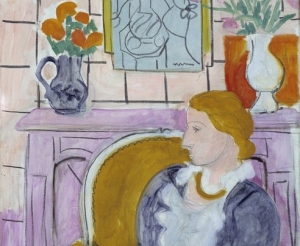
The descendants of a Parisian art dealer are demanding that the Henie Onstad Art Center near Oslo, Norway return Henri Matisse’s (1869-1954) Blue Dress in a Yellow Armchair (1937) to them. Nazis seized the painting from its owner, Paul Rosenberg, prior to the outbreak of World War II. Ultimately, Rosenberg, one of the most prominent French art dealers and a personal friend of Pablo Picasso and Matisse, fled to New York and survived the war.
The painting in dispute has been a celebrated part of the Onstad’s collection since the museum was established in 1968. The work was donated to the fledgling institution by art collector Niels Onstad and his wife Sonjia Henie, an Olympic figure skater. Museum Director Tone Hansen attests that Onstad and Henie bought the painting from the Parisian Galerie Henri Benezit in 1950, unaware of its troublesome provenance. Hansen was unaware that Nazis had stolen the painting until the Art Loss Register, an organization that tracks lost and stolen paintings, notified him in 2012.
Art Registry documents show that Rosenberg purchased Blue Dress in a Yellow Armchair directly from Matisse in 1937. Following World War II, Rosenberg attempted to re-establish his business and tried to recover the 400+ works that had been taken from him by the Nazis. The painting was marked on Rosenberg’s personal documents as missing after the war. He also reported the painting missing to French authorities in 1946.
While Rosenberg’s heirs hope that the painting will be returned to their family, Norwegian law states that if a person has had an item in good faith for over 10 years, they are deemed the rightful owner. However, the argument is in contrast to the Washington Conference Principles on Nazi-Confiscated Art, which Norway is a part of.
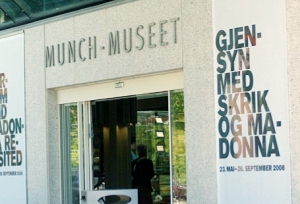
On Wednesday, March 13, 2013 Norwegian officials announced that the country’s government would help fund a new museum devoted to the influential painter and printmaker Edvard Munch (1863-1944). The new institution will replace the current Munch Museum in Oslo, Norway, which was built after World War II in a notoriously rundown neighborhood. Many believe that the shoddily constructed museum does not do justice to Munch, his art or his legacy.
The city council has been discussing the creation of a new museum since 2008 but plans were stymied by disagreements over cost, location, and architecture. After years of disputes and little progress, the Norwegian state decided to step in by offering to help fund the $278 million project as well as assist with project management. State officials are asking Oslo’s city council to make a formal request for the support, which would hopefully lift the museum out of its dismal financial situation.
Upon his death in 1944, Munch bequeathed a large portion of his collection to the city of Oslo including two versions of his seminal painting The Scream. While many people hope that the government’s offer will help move the museum project along, others are not as optimistic. Carl Ivar Hagen, a member of the city council, doesn’t expect the matter to be resolved anytime soon. Hagen believes that even with the state’s assistance disputes over the new museum’s location will continue to halt progress.
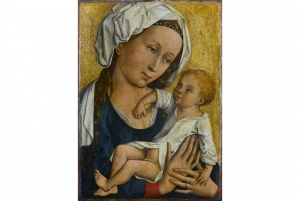
Germany’s Staatsgalerie Stuttgart museum returned a 15th century Renaissance painting stolen by Nazis during World War II to the estate of a Jewish art dealer. The museum acquired Virgin and Child, which is attributed to the Master of Flémalle (1375-1444) who is identified by historians as Robert Campin, in 1948.
The painting once belonged to Max Stern (1904-1987) who lost over 400 paintings to the Nazi regime during a forced sale in 1937. After Jews were banned from selling art in Nazi-occupied Europe, Stern shuttered his Dusseldorf gallery and escaped to London in December of the same year. Before settling in Montreal, Stern sold even more paintings, including Virgin and Child, in order to buy a German exit visa for his mother. Stern went on to purchase the Dominion Gallery of Fine Arts and established himself as one of Canada’s most important art dealers and collectors.
Upon his death in 1987, Stern donated a portion of his estate to Concordia and McGill Universities in Montreal as well as the Hebrew University in Jerusalem. For the past ten years Concordia has been working to recover the hundreds of paintings Stern lost at the hands of the Nazis. The initiative, known as the Max Stern Art Restitution Project, has facilitated the return of 9 works originally belonging to Stern; Virgin and Child is the 10th and the only work to be returned from a German museum thus far.
A ceremony was held on Tuesday, March 5, 2013 at the Canadian Embassy in Berlin to celebrate the painting’s return.
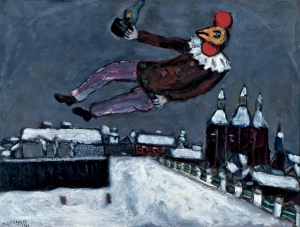
During a career that spanned much of the 20th century, Russian artist Marc Chagall (1887-1985) was associated with a number of artistic movements, making a name for himself as a pioneer of modernism. Considered one of the most successful artists of his time, Chagall drew inspiration from his Orthodox Jewish upbringing, a theme that prevailed through the many mediums and styles he explored.
The Musee de Luxembourg in Paris has organized an exhibition devoted to the artist titled Chagall: Between War and Peace. The show, which focuses on Chagall’s work between 1914, when he developed his own style, and the mid-1950s, when many critics deemed his work repetitive, includes approximately 100 oil paintings, watercolors, drawings and etchings in relatively chronological order.
Between War and Peace is broken into four pivotal periods in Chagall’s life and work. After living in Paris from 1910 to 1914 and associating with many prominent figures of the avant-garde, Chagall returned to his native Russia to be with his future wife, Bella. “Russia in Wartime” explores Chagall’s work from this period, which was haunted by the brutality and horrors that World War I brought to his homeland.
In 1922, Chagall left Russia for Berlin. He soon returned to Paris where he re-established himself as a painter. “Between the Wars” focuses on this period, which includes Chagall’s work as an illustrator. Many of the pieces from this time feature landscapes, portraits of the artist with his wife, circus scenes, and hybrid creatures, which are prime examples of Chagallian bestiary.
In 1937, Nazis seized any works by Chagall that resided in public collections in Germany. As World War II unfolded, Chagall left France for New York, which is the subject of “Exile in the United States.” His work took a somber turn as his native land was ravaged by the war. A particularly productive time for Chagall, he also created a number of works devoted to Bella, who died in 1944.
The exhibition’s final portion, “The Post-War Years and the Return to France,” explores Chagall’s move back to Europe in 1949. During this time Chagall experimented with stained glass, sculpture, ceramics, mosaic, and various engraving techniques. His works from this period radiates with light and emotional tonalities.
Chagall: Between War and Peace is on view through July 21, 2013.
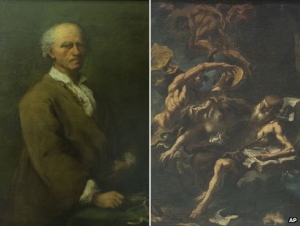
France will return seven paintings stolen from their Jewish owners by Nazis during World War II, part of an ongoing effort to give back hundreds of plundered works that still hang in French institutions including the Louvre. The seven paintings were all stolen or sold under duress as their owners fled Europe during the Nazi occupation. The works were to be displayed in Adolf Hitler’s art gallery, which he planned to build in his birthplace in Austria but never came to fruition.
At the end of World War II, with most of Europe in shambles, many artworks were left unclaimed and thousands of French-owned works found homes in the France’s various museums. Government efforts to return these works gained steam last year at the urging of the owners’ families. The French government believes that there are approximately 2,000 Nazi looted artworks in state institutions; inaccurate archiving and the challenge of properly identifying paintings has made the restitution process a long one.
Six of the seven works to be returned were owned by Richard Neumann, an Austrian Jew who sold his remarkable art collection for a fraction of its value in order to flee Europe. His collection included works by Alessandro Longhi (1733-1831), Sebastiano Ricci (1659-1734), and Gaspare Diziani (1689-1767). The paintings were ultimately placed in the Louvre, the Museum of Modern Art of Saint-Etienne, the Agen Fine Arts Museum, and the Tours Fine Art Museum after the war.
The other painting to be returned is Pieter Jansz Van Asch’s (1603-1678) The Halt, which was stolen by the Gestapo in Prague in 1939 from Josef Wiener, a Jewish banker who was deported and later died in a concentration camp. The Dutch masterpiece hung in the Louvre for years until Van Asch’s family tracked it down online in the mid-2000s. The French Prime Minister, Francois Fillon, approved the return of the painting to the family last year.
|
|
|
|
|